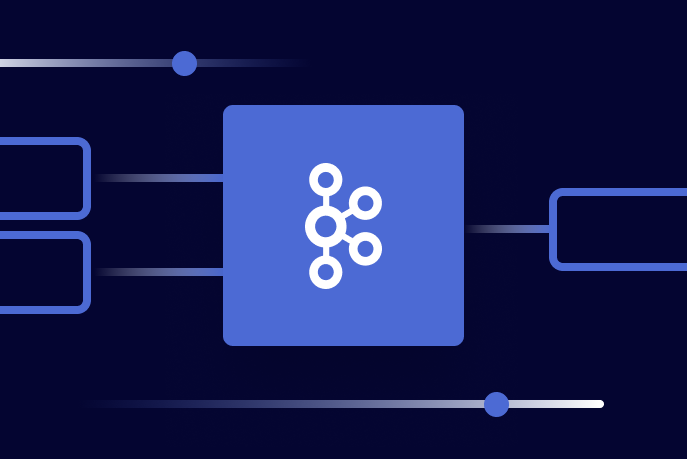Ahorra un 25 % (o incluso más) en tus costes de Kafka | Acepta el reto del ahorro con Kafka de Confluent
Apache Kafka
Data Products, Data Contracts, and Change Data Capture
Change data capture is a popular method to connect database tables to data streams, but it comes with drawbacks. The next evolution of the CDC pattern, first-class data products, provide resilient pipelines that support both real-time and batch processing while isolating upstream systems...
Unlock Cost Savings with Freight Clusters–Now in General Availability
Confluent Cloud Freight clusters are now Generally Available on AWS. In this blog, learn how Freight clusters can save you up to 90% at GBps+ scale.
Contributing to Apache Kafka®: How to Write a KIP
Learn how to contribute to open source Apache Kafka by writing Kafka Improvement Proposals (KIPs) that solve problems and add features! Read on for real examples.
Design and Deployment Considerations for Deploying Apache Kafka on AWS
Apache Kafka (the basis for the Confluent Platform) delivers an advanced stream processing platform for streaming data across AWS, GCP, and Azure at scale, used by thousands of companies. Amazon...
How to Tune Kafka Connect Source Connectors to Optimize Throughput
Get a high-level overview of source connector tuning: What can and cannot be tuned, and tuning methodology for any and all source connectors.
What Is an Apache Kafka Cluster? (And Why You Should Care)
Learn the basics of what an Apache Kafka cluster is and how they work, from brokers to partitions, how they balance load, and how they handle replication, and leader and replica failures.
The Importance of Standardized Hashing Across Producers
When developing streaming applications, one crucial aspect that often goes unnoticed is the default partitioning behavior of Java and non-Java producers. This disparity can result in data mismatches and inconsistencies, posing challenges for developers.
When Should You Spin Up Your Next Apache Kafka Cluster?
Learn when to consider expanding to multiple Apache Kafka clusters, how to manage the operations for large clusters, and tools and resources for efficient operations.
What Is an Event in the Apache Kafka Ecosystem?
The term “event” shows up in a lot of different Apache Kafka® arenas. There’s “event-driven design,” “event sourcing,” “designing events,” and “event streaming.” What is an event, and what is the difference between the role an event has to play in each of these contexts?
Introducing Apache Kafka 3.5
We are proud to announce the release of Apache Kafka® 3.5.0. This release contains many new features and improvements. This blog post will highlight some of the more prominent features.
Confluent Will Beat Your Cost of Running Kafka (or $100 on us)
Companies are looking to optimize cloud and tech spend, and being incredibly thoughtful about which priorities get assigned precious engineering and operations resources. “Build vs. Buy” is being taken seriously again. And if we’re honest, this probably makes sense. There is a lot to optimize.
Tackling the Hidden and Unhidden Costs of Kafka
Operating Kafka at scale can consume your cloud spend and engineering time. And operating everyday tasks like scaling or deploying new clusters can be complex and require dedicated engineers. This post focuses on how Confluent Cloud is 1) Resource Efficient, 2) Fully Managed, and 3) Complete.
The (Hidden) Cost of Kafka Operations
In part 2 of our blog series on understanding and optimizing your Kafka costs, we dive into how to estimate costs stemming from the development and operations personnel needed to self-manage Kafka.
A Guide to Mastering Kafka's Infrastructure Costs
It's hard to properly calculate the cost of running Kafka. In part 1 of 4, learn to calculate your Kafka costs based on your infrastructure, networking, and cloud usage.
Unknown Magic Byte! How to Address Magic Byte Errors in Apache Kafka
If you’ve been working with Kafka Streams and have seen an “unknown magic byte” error, you might be wondering what a magic byte is in the first place, and also, how to resolve the error. This post explains the answers to both questions.
Getting Started with Python for Apache Kafka
Get an introduction to why Python is becoming a popular language for developing Apache Kafka client applications. You will learn about several benefits that Kafka developers gain by using the Python language.
Multi-Geo Replication 101 for Apache Kafka: The What, How, and Why
Discover tools, practices, and patterns for planning geo-replicated Apache Kafka deployments to build reliable, scalable, secure, and globally distributed data pipelines that meet your business needs.





